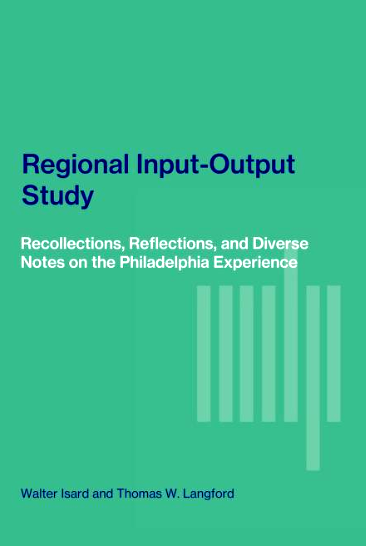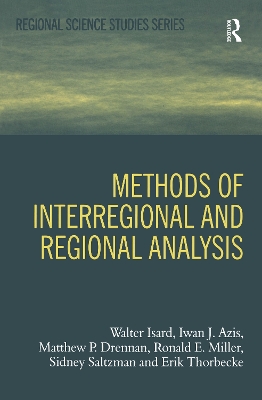Regional Science Studies
2 total works
Input-output analysis is based on an industry interaction model portraying the interrelation of purchases and sales as a means of predicting the future of an economy.The authors give their readers a detailed description of the practical application of the theoretical input-output concept to the economy of metropolitan Philadelphia. This case study centers around the procedural and methodological experiences gained in the construction of the most extensive and detailed regional input-output analysis completed to date. This study constitutes the first such input-output analysis available for any large metropolitan region.Simply written and understandable to the generalist, this tenth volume in the MIT Series of Regional Science Studies develops a series of general discussions and specific comments for the benefit of those who may undertake or administer new studies. Recorded in the work are the mistakes made and lessons learned. One of the major lessons to emerge from the study is the general conclusion that both theoretical and practical grounds require a great deal more flexibility in the generation and adjustment data than had hitherto been thought. In contrast, constraints in the kind and sequencing of data prove to be more rigid than formerly believed. Overall, the study provides specific practical responses to major criticisms of sales-purchase data estimation, coefficient construction and final demand classification and reconciliation. No previous attempt has ever been made to relate such aspects of input-output theory to specific operations procedures. The final chapters outline the potential applications of input-output methodology to the analysis of the impact of the Vietnam War on the Philadelphia area and problems of environmental quality.This pioneering work should prove of interest not only to economists but also to regional scientists, public administrators, planning professionals, and students, as well as anyone generally interested in urban development.
Methods of Interregional and Regional Analysis
by Walter Isard, Iwan J. Azis, Matthew P. Drennan, Ronald E. Miller, Sidney Saltzman, and Erik Thorbecke
Published 17 September 1998
This landmark textbook introduces students to the principles of regional science and focuses on the key methods used in regional analysis, including regional and interregional input-output analysis, econometrics (regional and spatial), programming and industrial and urban complex analysis, gravity and spatial interaction models, SAM and social accounting (welfare) analysis and applied general interregional equilibrium models. The coherent development of the materials contained in the set of chapters provides students with a comprehensive background and understanding of how to investigate key regional problems. For the research scholar, this publication constitutes an up-to-date source book of the basic elements of each major regional science technique. More significant, it points to new directions for future research and ways interregional and regional analytic approaches can be fused to realise much more probing attacks on regional and spatial problems - a contribution far beyond what is available in the literature.

